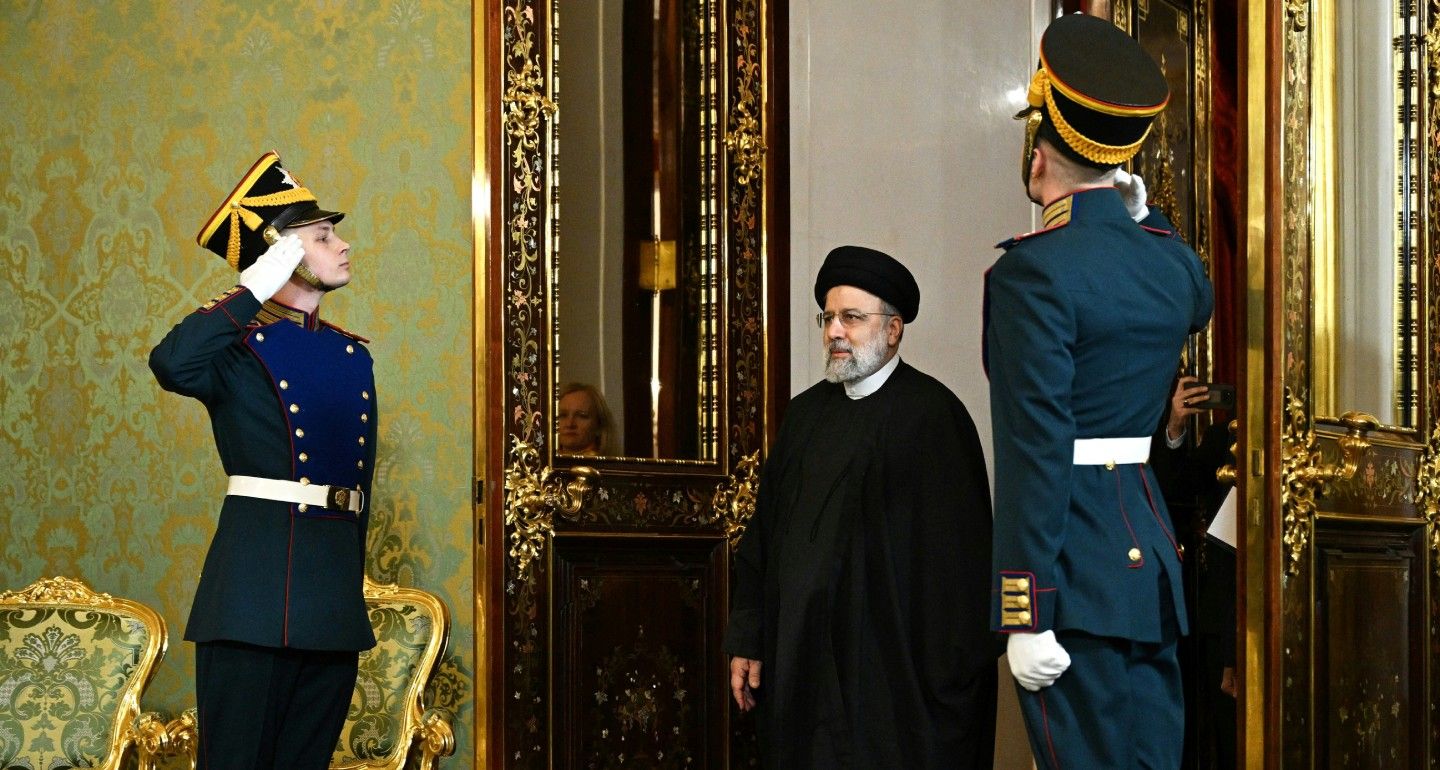The little we know about U.S. President-elect Donald Trump’s foreign policy plans suggests he will seek dialogue with Moscow, and ramp up the pressure on Tehran. Could this sort of approach upend the anti-Western unity at the heart of the growing ties between Russia and Iran?
There has been significant military cooperation between Russia and Iran since the full-scale invasion of Ukraine in 2022. The two powers have been selling each other weapons and carrying out joint military exercises everywhere from the Caspian Sea to the Persian Gulf.
At the same time, there have also been major steps toward economic integration. The most significant was the inking of a free trade agreement between Iran and the Moscow-led Eurasian Economic Union (EAEU). Due to enter into force in 2025, this agreement will see a reduction of tariffs on 90 percent of goods traded between Iran and EAEU member states Russia, Armenia, Belarus, Kazakhstan, and Kyrgyzstan. This is the first such free trade agreement for Iran, and the second for the EAEU. Iran has also submitted an application for observer status in the EAEU. Moldova, Uzbekistan, and Cuba already hold that status, but Iran would be the first country to combine it with a free trade agreement.
In a similar vein, Tehran and Moscow have integrated their national payment systems: respectively, Shetab and Mir. According to Iranian officials, cards issued by Iranian banks will work in Russian ATMs by the end of 2024, and Russian cards will start working in Iranian ATMs early next year. This is an unprecedented step for Iran, which does not even have such an agreement with banks in China, Türkiye, or the United Arab Emirates.
Moscow is also pushing for Iran to be included in several international organizations. Russia facilitated Iran’s admittance to the Shanghai Cooperation Organization (SCO) in 2023, and to the BRICS group of major emerging economies in 2024.
It’s not just about trade. Russia is hoping that free trade zones, integrated financial systems, and joint membership in international groups can cement stable political ties. The Russia-Iran relationship is an experiment—and if it’s successful, the Kremlin would like to see it replicated with other countries.
This is not the first time Russia has sought to use Iran as a testing ground. This is exactly what happened, for example, with the construction of the Bushehr nuclear power plant in the 2000s. The facility was the first time Russian state nuclear agency Rosatom had successfully worked abroad, and it became something of a blueprint for subsequent projects. It proved a particularly persuasive option for Middle Eastern states, and Russian contractors are currently building nuclear power plants in Türkiye and Egypt.
Now Moscow is in talks with Egypt and the UAE over free trade agreements with the EAEU similar to that developed for Iran. Indonesia is another nation potentially interested in such a deal. Economic heavyweights such as India and China have not received such proposals, however, because Russia sees the EAEU as a group in which Russia should remain the biggest economic player.
Linking up Russia and Iran’s payment systems is also something that could be repeated, and Tehran has proposed using this model as a basis for connecting the payment systems of all the countries in BRICS. At the same time, Moscow is pushing to expand groups like BRICS and the SCO. Shortly after Iran was admitted to the SCO, so was Belarus—Russia’s closest ally among post-Soviet states. Egypt, Ethiopia, and the UAE joined BRICS concurrently with Iran, and Azerbaijan and Türkiye have also said they want to join.
Giving Iran a more prominent role on the world stage in this way is unlikely to please the incoming Trump administration. During his last presidency, Trump put “maximum pressure” on Tehran. The U.S. withdrawal from the Iran nuclear deal in 2018, along with the tightening of economic sanctions, was one of the biggest challenges Tehran has faced for decades.
Nevertheless, Washington is unlikely to be able to push Iran and Russia’s continuing economic integration significantly off course. The measures taken by Trump during his last presidency were likely the maximum economic pain possible to inflict on Iran. What’s more, President Joe Biden has more or less continued his predecessor’s policies. Among other things, this sort of pressure accelerated Iran’s warming ties with Russia. Any additional pressure from the United States would likely have the same effect.
Of course, Trump could come up with something more original, such as offering to ease sanctions against Russia if the Kremlin were to stop supporting Iran. But that would require a radical rethink of U.S. foreign policy, and is unlikely to generate much enthusiasm in Moscow. For Russia, Iran is both a major partner and a testing ground for a new form of international relations, and it’s unlikely to want to see its experiment cut short.
It’s true that some of the political imperatives of improving ties with Iran have actually caused economic problems for Russia. For example, the slashing of tariffs with Iran in the EAEU free trade deal is far more beneficial for Iranian exporters than their Russian counterparts.
But economic details are unlikely to distract the Kremlin from its geopolitical goals. In many ways, Iran is an ideal partner for Russia because it has nothing to lose when it comes to relations with the West. And every step toward closer ties with Iran nourishes Moscow’s hope that it will be able to forge a new, anti-Western model of international relations.




